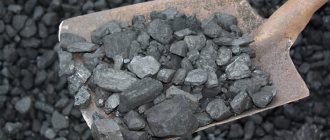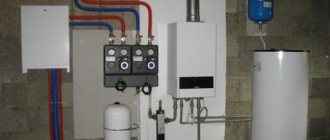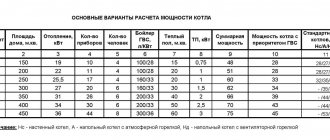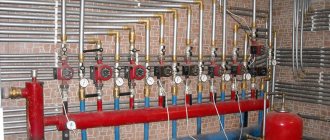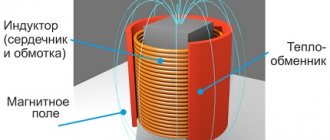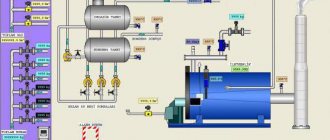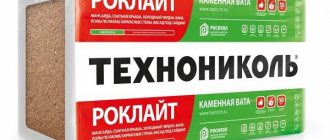What is specific heat of combustion?
Specific heat of combustion q is a physical quantity equal to the amount of heat released during complete combustion of 1 kg of fuel.
The formula for specific heat of combustion looks like this:
$$q={Q over m}$$
Where:
Q is the amount of heat released during fuel combustion, J;
m—fuel mass, kg.
The unit of measurement for q in the International System of Units (SI) is J/kg.
$$[q]={J over kg}$$
To denote large values of q, off-system energy units are often used: kilojoules (kJ), megajoules (MJ) and gigajoules (GJ).
The values of q for different substances are determined experimentally.
Knowing q, we can calculate the amount of heat Q that will result from the combustion of fuel with mass m:
$$Q={q * m}$$
Lower, higher and specific heat of combustion
01 December 2010
5 minutes
0
Lower, higher and specific heat of combustion
Heat of combustion is the amount of heat released during complete combustion of a mass (for solid and liquid substances) or volumetric (for gaseous) unit of a substance. There are higher (QBp) and lower (QHp) calorific values. The higher calorific value is understood as the amount of heat that is released during complete combustion of a substance, including the heat of condensation of water vapor when cooling the combustion products. The lowest calorific value corresponds to the amount of heat that is released during complete combustion, without taking into account the heat of condensation of water vapor. The heat of condensation of water vapor is also called the latent heat of combustion. Thus, the lower calorific value is the amount of heat released during complete combustion of a unit mass or volume (for gas) of a combustible substance and cooling of the combustion products to the dew point temperature. In thermal calculations, the lower calorific value is taken as 100%. The latent heat of combustion of a gas is the heat that is released when water vapor contained in combustion products condenses. Theoretically, it can reach 11%. In practice, it is not possible to cool the combustion products until complete condensation, and therefore the concept of lower calorific value (QHp) has been introduced, which is obtained by subtracting from the higher calorific value the heat of vaporization of water vapor both contained in the fuel and those formed during its combustion. The vaporization of 1 kg of water vapor requires 2514 kJ/kg (600 kcal/kg). For solid and liquid fuels, the lower calorific value is determined by the formulas (kJ/kg or kcal/kg):
QHP = QBP - 2514•(9HP + WP/100) or QHP = QBP - 600•(9HP + WP/100) where: - 2514 - heat of vaporization at a temperature of 0°C and atmospheric pressure, kJ/kg; — HP and WP — the content of hydrogen and water vapor in the working fuel, %; 9 is a coefficient showing that the combustion of 1 kg of hydrogen in combination with oxygen produces 9 kg of water. Heat of combustion is the most important characteristic of a fuel, as it determines the amount of heat obtained by burning 1 kg of solid or liquid fuel or 1 m³ of gaseous fuel in kJ/kg (kcal/kg). 1 kcal = 4.1868 or 4.19 kJ. The lower calorific value is determined experimentally for each substance and is a reference value. It can also be determined for solid and liquid materials, with a known elemental composition, by calculation in accordance with the formula of D.I. Mendeleev, kJ/kg or kcal/kg: QHP = 339 CP + 1256 HP - 109 (OP - SLP) - 25.14 (9HP + WP) or
QHP = 81 CP + 246 HP - 26 (OP - SLP) - 6 WP Specific heat of combustion is the change in enthalpy that accompanies the isothermal and isobaric combustion reaction of a unit mass of the process medium with an equivalent amount of oxygen. Below, in the table, the lower calorific value of some substances is given as an example.
| Substances and materials | Lower calorific value QHp, MJ/kg |
| Petrol | 41,87 |
| Kerosene | 43,54 |
| Paper: books, magazines | 13,40 |
| Wood (blocks W = 14%) | 13,80 |
| Natural rubber | 44,73 |
| Linoleum: polyvinyl chloride | 14,31 |
| Rubber | 33,52 |
| Staple fiber | 13,80 |
| Polyethylene | 47,14 |
| Cotton loosened | 15,70 |
Where can you find q values
Information on the values of the specific heat of combustion for specific types of fuel can be found in technical reference books or in their electronic versions on Internet resources. They are usually presented in the following table:
Specific heat of combustion, q
| Substance | MJ/kg | Substance | MJ/kg |
| Peat | 8,1 | Diesel fuel | 42,7 |
| Firewood | 10,2 | Kerosene | 44,0 |
| Brown coal | 15,0 | Petrol | 48,0 |
| Coal | 29,3 | Propane | 47,5 |
| Oil | 41,3 | Methane | 50,11 |
Resources of proven, modern fuels are limited. Therefore, in the future they will be replaced by other energy sources:
- atomic, using the energy of nuclear reactions;
- solar, converting the energy of sunlight into heat and electricity;
- wind;
- geothermal, using the heat of natural hot springs.
Tabular data
To date, the q of all known substances has been measured. The table shows q values for the most common combustible materials:
| Type of fuel | q in mJ/kg |
| Methane | 50,1 |
| Natural gas | 46,1 |
| Petrol | 43,6 |
| Oil | 41 |
| Fuel oil | 39,2 |
| Alcohol | 27 |
| Charcoal | 31 |
| Coal | 29,3 |
| Methanol | 22,7 |
| Dry firewood | 15 |
| Peat | 8,1 |
| Powder | 3,8 |
The actual amount of heat released as a result of combustion may differ from the tabulated data depending on the following factors:
- humidity - the presence of moisture in the fuel reduces its heat of combustion, as energy costs for evaporating excess water increase;
- ash content - the content of mineral impurities in the fuel reduces the percentage of combustible substances in the sample;
- sulfur content - when burning combustible material containing impurities of sulfur compounds, sulfur dioxide is formed, which reduces the concentration of oxygen necessary to support the combustion process.
Specific heat of combustion of some fuels
Coal has the highest energy intensity among solid fuels - 27 MJ/kg (anthracite - 28 MJ/kg). Charcoal has similar indicators (27 MJ/kg). Brown coal has a much lower calorific value - 13 MJ/kg. It also usually contains a lot of moisture (up to 60%), which, when evaporated, reduces the total heat of combustion.
Peat burns with a heat of 14-17 MJ/kg (depending on its condition - crumbled, pressed, briquette). Firewood dried to 20% humidity releases from 8 to 15 MJ/kg. At the same time, the amount of energy received from aspen and birch can vary almost twice. Pellets from different materials give approximately the same indicators - from 14 to 18 MJ/kg.
Liquid fuels differ much less in their specific heat of combustion than solid fuels. Thus, the specific heat of combustion of diesel fuel is 43 MJ/l, gasoline - 44 MJ/l, kerosene - 43.5 MJ/l, fuel oil - 40.6 MJ/l.
The specific heat of combustion of natural gas is 33.5 MJ/m³, propane - 45 MJ/m³. The most energy-intensive gaseous fuel is hydrogen gas (120 MJ/m³). It is very promising for use as fuel, but to date no optimal options for its storage and transportation have been found.
We recommend: Foamed polyethylene (polyethylene foam)
Heat of combustion
| Fuel | Wв, MJ/kg | Wn, MJ/kg |
| Anthracite (grade A) | 32-34 | 19-27 |
| Brown coals | 25-29 | 10-17 |
| Charcoal | 30 | — |
| Firewood | 19 | |
| Long-flame coals (D) | 31-32 | 21-24 |
| Peat | 22-25 | 8.4-11 |
| Natural gas | 38.23 | |
| Propane-butane | 42.16 | |
| Diesel fuel | 42.7 | |
| Pellets | 19 |
The heat of combustion, determined without taking into account losses due to evaporation of water contained in the fuel and combustion products, is called the highest heat Wв. The heat of combustion, taking into account losses due to evaporation of water, is called the lower heat Wн.
When calculating the performance of modern gaseous fuel boilers, the highest specific heat of combustion of the fuel is used. Liquid fuel and solid fuel boilers are calculated based on the lowest specific heat of combustion of the fuel.
The fact is that due to the high temperature of the fuel combustion process and the difficulty of adjusting the thermal reaction of liquid fuel and solid fuel boilers, processes with natural smoke draft are used. Processes with artificial draft are used to burn gas fuel.
When operating atmospheric boilers (that is, boilers with natural draft), it is customary to emit flue gases into the atmosphere along with water vapor at temperatures above 100°C. In such cases, the heat of vaporization is considered parasitic, since it is not used in heat exchange processes.
That is why for thermal calculations of boilers that do not use the heat of condensation of steam contained in combustion products, only the lower calorific value of fuel is taken into account.
Comparison of energy intensity of different types of fuel
When comparing the energy value of the main types of solid, liquid and gaseous fuels, it can be established that one liter of gasoline or diesel fuel corresponds to 1.3 m³ of natural gas, one kilogram of coal - 0.8 m³ of gas, one kg of firewood - 0.4 m³ of gas.
The heat of combustion of a fuel is the most important indicator of efficiency, but the breadth of its distribution in areas of human activity depends on the technical capabilities and economic indicators of use.
Measuring the amount of heat of combustion
The higher the specific heat capacity of a combustible material, the more economical its consumption. The amount of heat that is generated when fuel burns can be calculated in the following ways .
- Theoretical method. Knowing what the specific heat of combustion of fuel is and its formula, we can derive a formula for finding the amount of heat. So, if q = Q/m, then Q = q * m.
- Practical way. In practice, the amount of heat generated as a result of the combustion reaction is measured using special vessels - calorimeters. The calorimeter shows the amount of energy that is released as a result of the complete combustion of a certain sample of a substance in a container placed in water. Based on the difference in water temperature readings, the amount of energy released is determined.
Specific heat of combustion of solid fuels (coal, firewood, peat, coke)
The table presents the values of the specific heat of combustion of dry solid fuel in the dimension MJ/kg. Fuel in the table is arranged by name in alphabetical order.
Of the solid fuels considered, coking coal has the highest calorific value - its specific heat of combustion is 36.3 MJ/kg (or in SI units 36.3·106 J/kg). In addition, high calorific value is characteristic of hard coal, anthracite, charcoal and brown coal.
Fuels with low energy efficiency include wood, firewood, gunpowder, milling peat, and oil shale. For example, the specific heat of combustion of firewood is 8.4...12.5, and that of gunpowder is only 3.8 MJ/kg.
Specific heat of combustion of solid fuel (coal, firewood, peat, coke)FuelSpecific heat of combustion, MJ/kg
| Anthracite | 26,8…34,8 |
| Wood pellets (pellets) | 18,5 |
| Dry firewood | 8,4…11 |
| Dry birch firewood | 12,5 |
| Gas coke | 26,9 |
| Blast coke | 30,4 |
| Semi-coke | 27,3 |
| Powder | 3,8 |
| Slate | 4,6…9 |
| Oil shale | 5,9…15 |
| Solid rocket fuel | 4,2…10,5 |
| Peat | 16,3 |
| Fibrous peat | 21,8 |
| Milled peat | 8,1…10,5 |
| Peat crumb | 10,8 |
| Brown coal | 13…25 |
| Brown coal (briquettes) | 20,2 |
| Brown coal (dust) | 25 |
| Donetsk coal | 19,7…24 |
| Charcoal | 31,5…34,4 |
| Coal | 27 |
| Coking coal | 36,3 |
| Kuznetsk coal | 22,8…25,1 |
| Chelyabinsk coal | 12,8 |
| Ekibastuz coal | 16,7 |
| Frestorf | 8,1 |
| Slag | 27,5 |
06th. Heat of fuel combustion and machine efficiency
- home
- Directory
- Physics
- Introduction to Thermodynamics
- Books, lectures and notes on physics
- Physics 7th grade
- 06th. Heat of fuel combustion and machine efficiency
§ 06th. Heat of fuel combustion and machine efficiency
As we noted in the previous paragraph, in the 19th century a huge number of steam engines were built: from small to huge. They consumed incredibly large amounts of fuel, usually coal. It had to be mined and transported to the place of consumption, which led to large financial costs. The question arose: what is the efficiency of a steam engine and how can it be increased?
The amount of heat released during complete combustion of a substance is
depends on its mass and
specific heat of combustion
:
Formula for calculating the amount of heat released during complete combustion of fuel.
| Q = q m | Q – amount of heat, J |
Specific heat of combustion
– a physical quantity showing the amount of heat released during complete combustion of 1 kg of a substance.
Coefficients q
for various combustible substances (fuels) are measured experimentally and listed in tables.
The specific heat of combustion of a fuel shows the amount of heat released during complete combustion of 1 kg of fuel.
| Specific heat of combustion of substances, MJ/kg | ||||
| Coal | 30 | Petrol | 46 | |
| Firewood | 10 | Kerosene | 46 | |
| Peat | 14 | Alcohol | 27 | |
| Hydrogen (gas) | 120 | Natural gas | 44 | |
Measuring how much mechanical work a machine has done is not difficult. Then the efficiency of the machine
can be calculated using the formula:
Formula for calculating the efficiency of a heat engine.
| η = | A useful | · 100% | η – efficiency of the heat engine, % | ||
| Q full |
Calculations showed that the efficiency of steam engines in the 19th century was very low: about 1%. However, none of the physicists had any idea what the maximum efficiency could be and what engineers could do to increase it.
In 1824, the work of the French engineer S. Carnot, “Reflections on the Motive Force of Fire,” was published. He considered an ideal heat engine (heat engine). Without going into details, let's name Carnot's main ideas.
Firstly, any heat engine must contain a heater and a cooler.
This is necessary so that the working fluid (gas or steam) can alternately increase and decrease the volume, while moving the piston and doing work.
Secondly, the higher the heater temperature and the lower the cooler temperature, the higher the efficiency will be.
For an ideal heat engine (heat engine), Carnot derived the formula:
Formula for calculating the maximum efficiency of an ideal heat engine.
| η = | Theat – Tcool _ | · 100% | η – maximum engine efficiency, % | ||
| T load |
In this formula T
heat and
T
cool are the so-called
absolute temperatures
on the Kelvin scale (see § 6-a).
Since the coolant for heat engines (engines) is atmospheric air or water from open reservoirs, it is impossible to reduce their temperature. Therefore, to increase efficiency it is necessary to increase the heater temperature,
more precisely, the temperature to which the working fluid is heated.
Environmental problems of using heat engines
. We live in the 21st century, which is impossible to imagine without power plants and cars. A large share of power plants in the world are thermal, that is, burning fuel (coal or gas). Cars that run on electricity are rare; all others burn fuel (gasoline). At the same time, there are two circumstances that are detrimental to the environment.
Firstly, exhaust gases pollute the atmosphere, making it unsuitable for normal human life. Secondly, the generated heat changes the Earth's climate and causes irreparable harm to nature. Therefore, the task of humanity is to switch to engines that are safer for the environment.
Introduction to Thermodynamics Formulas Physics Theory Grade 7
Source
A source of information
Are you interested in top gadgets and popular technological innovations?

